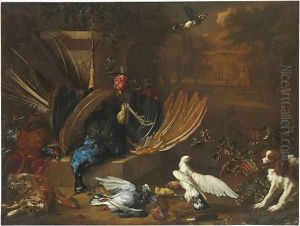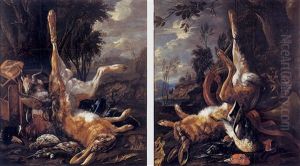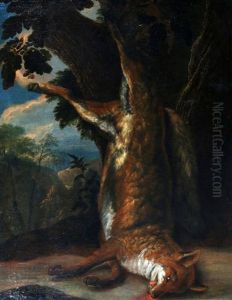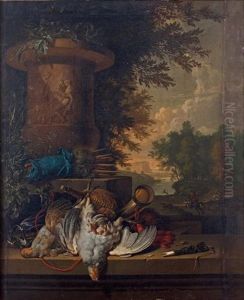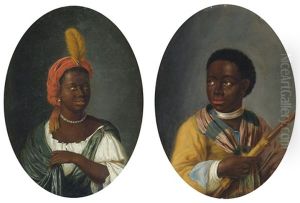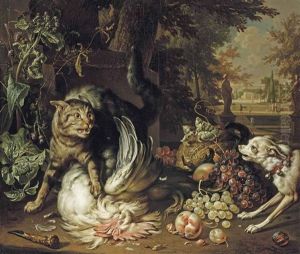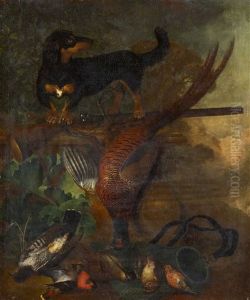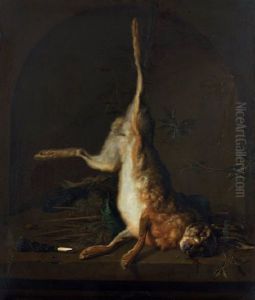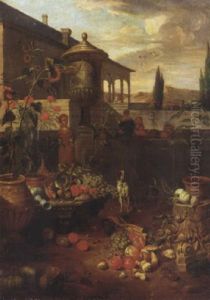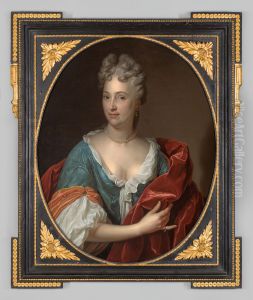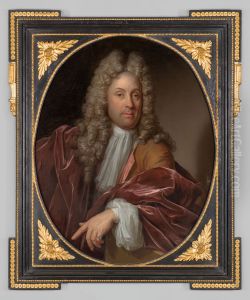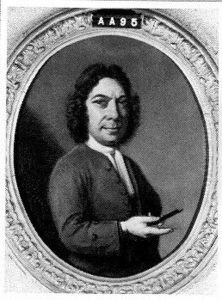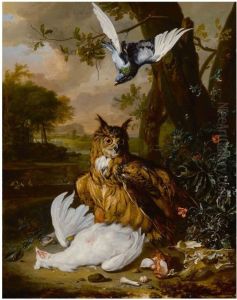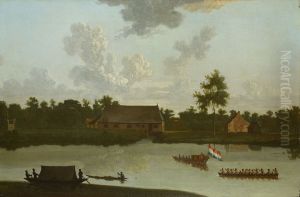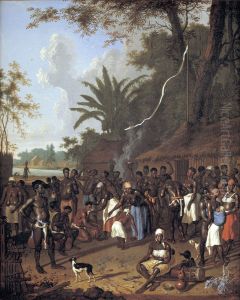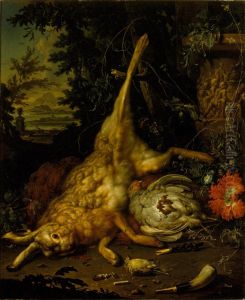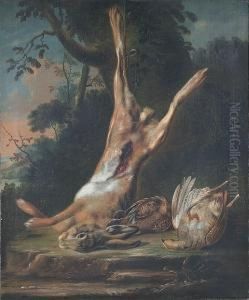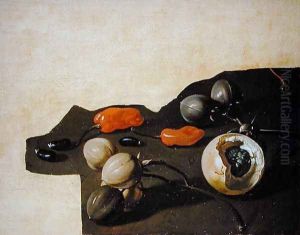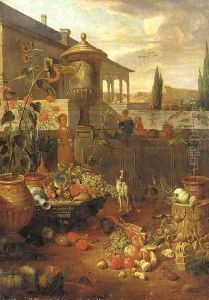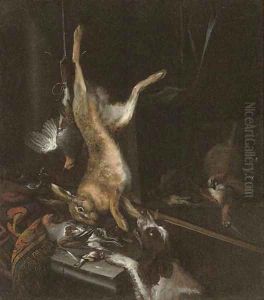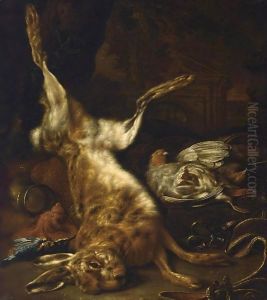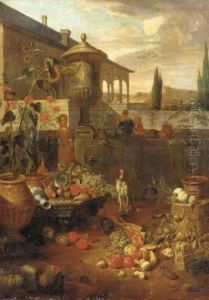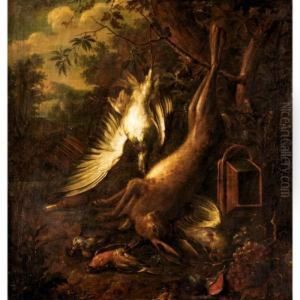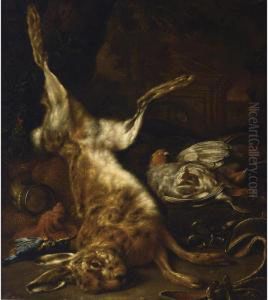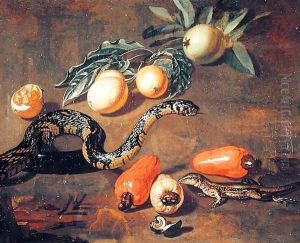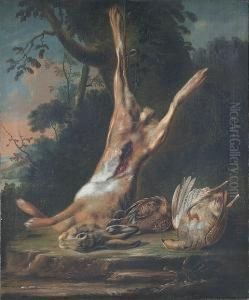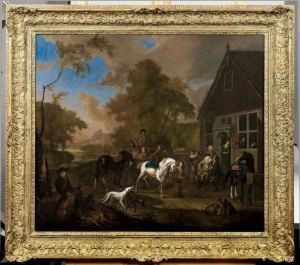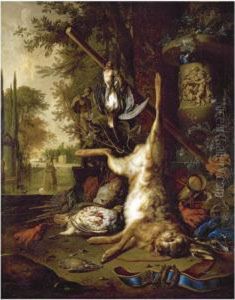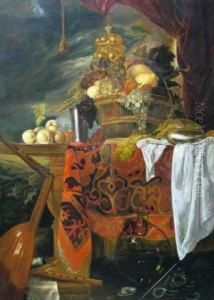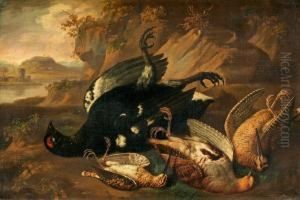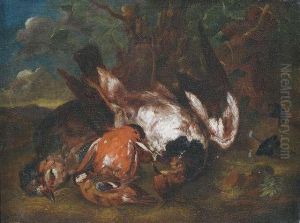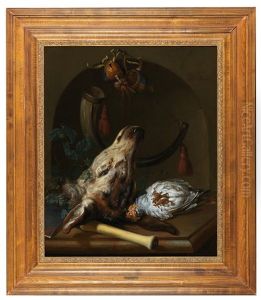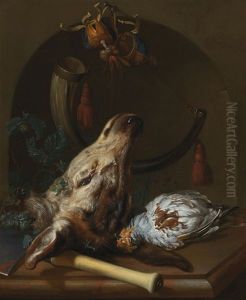Dirk Valkenburg Paintings
Dirk Valkenburg was a Dutch painter born in 1675 in Amsterdam, Netherlands. He was primarily known for his works as a painter of still lifes, landscapes, and scenes from plantations in the Dutch colony of Surinam. Valkenburg was a student of the prominent Amsterdam painter Michiel van Musscher and later worked under the guidance of Jan Weenix, which significantly influenced his artistic development and style. In the early 1700s, Valkenburg ventured to Surinam, where he stayed from 1706 to 1708. During his time there, he was commissioned by Jonas Witsen, who was a mayor of Amsterdam and also the director of the Sociëteit van Suriname (Society of Surinam). Valkenburg's task was to document the life, scenery, and the workings of the plantations. His works from this period are invaluable records of the early 18th-century life in the colony, giving insights into the operations of the plantations, the landscape, and the lives of both the European settlers and the enslaved Africans. After returning to the Netherlands, Valkenburg continued to paint, producing scenes based on his experiences in Surinam as well as portraits, landscapes, and still lifes. His works are characterized by their detailed depiction of natural and human subjects, reflecting both the European artistic traditions and the unique aspects of colonial life in Surinam. Despite his contributions to documenting this chapter of Dutch colonial history through his art, Valkenburg remains a relatively lesser-known figure in the Dutch Golden Age painting. Dirk Valkenburg passed away in 1721 in Amsterdam. Today, his works are held in various collections around the world, serving as important historical documents as well as artistic achievements. They provide a unique window into the Dutch colonial past, offering perspectives that are both informative and critical for understanding the complexities of this period.
